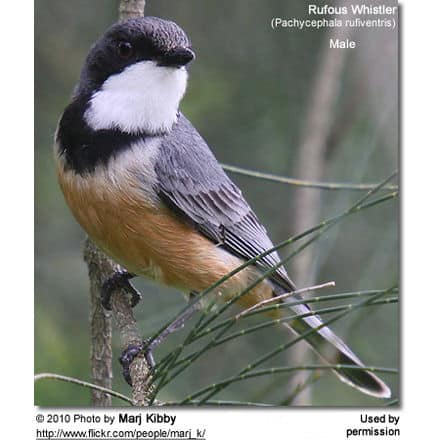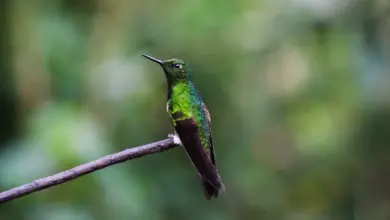Hummingbirds found in New York, USA
Hummingbirds found in the USA (by U.S. State) … Canada … Mexico … Puerto Rico … Jamaica … Honduras
Hummingbird Information … Hummingbird Species Photo Gallery

Hummingbirds typically found in New York are …
Ruby-throated Hummingbirds, Archilochus colubris – Native – Usually arrive in mid to late April, early May – with males usually being the first to show up to stake out their feeding territories. Most leave toward the end of September and October. Males usually depart first, and females and juveniles follow about two weeks later.
The male has a ruby-red throat, a white collar, an emerald green back and a forked tail.
The female has a green back and tail feathers that are banded white, black and grey-green.
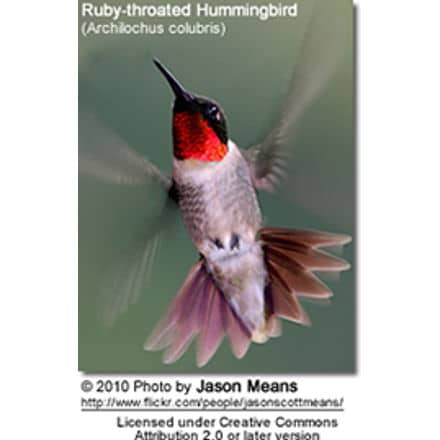
Rufous Hummingbirds, Selasphorus rufus — Casual Visitor … Like the Ruby-throated Hummingbird , they usually arrive in the first week of May (with some arriving as early as mid April). Males are usually the first to show up to stake out their feeding territories. Most leave toward the end of September. Again, first the males followed by the females and immature birds a couple of weeks later.
These hummingbirds are usually found in gardens and at feeders. These birds are fearless, and are known for chasing away other hummingbirds and even larger birds, or rodents away from their favorite nectar feeders and flowers.
Males can easily be identified by their glossy orange-red throats.
Females have whitish, speckled throats, green backs and crowns, and rufous, white-tipped tail feathers.
Rufous Hummingbird versus the similar Ruby-throated Hummingbird (Identification)
Calliope Hummingbirds, Stellula calliope – Occasional visitors / uncommon
The smallest breeding bird in North America. They are most easily confused with the Rufous Hummingbirds and the Broad-tailed Hummingbird.
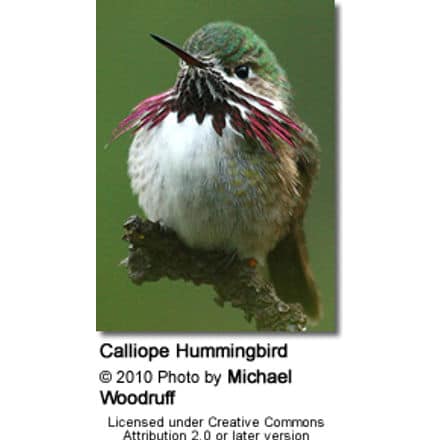
Anna’s Hummingbirds, Calypte anna – Rare / Accidental
One of the larger and the most vocal hummingbirds in the United States, where it is the only species to produce a song; specifically the males produce a complex series of scratchy noises, sounding like a sharp “chee-chee-chee; when moving from flower to flower, they emit toneless “chip” vocalizations. All other hummingbirds in the United States are mostly silent.
They are well known for their territorial behavior; the male makes elaborate dive displays at other birds and sometimes even at people. At the bottom of their dives, they produce high-pitched loud popping sounds with their tail feathers.
Males have glossy dark rose-red throats and crowns, which may appear black or dark purple in low light. The underside is mostly greyish; and the back metallic green.
Females have light grey chests with white and red spotting on the throat, greenish back and white tipped tails.
They resemble the Costa’s Hummingbirds, but the male’s Costa’s Hummingbird‘s gorget (throat feathers) is longer than that of the Anna’s. They are larger than the Rufous Hummingbirds and lack the rusty coloration of the Rufous Hummingbirds.
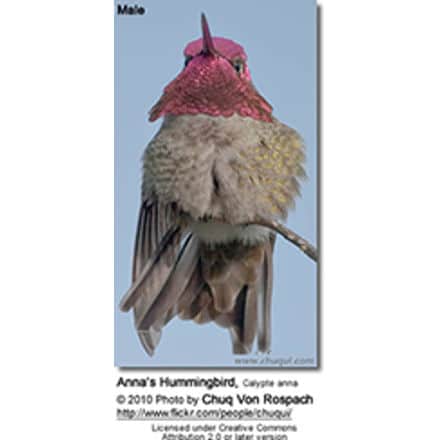
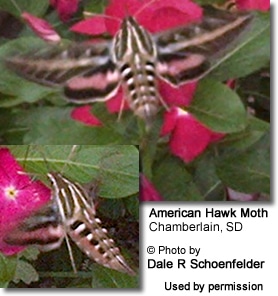
Confusion: Hummingbird or Insect?
Particularly the smaller hummingbird species are easily confused with insects – specifically with bees, or the hawk, clearwing or sphinx moths. Adding to the confusion is the fact that these insects are often found in the hummers’ territory and have similar flying and feeding patterns.
Moths have a couple of sensors or “antennas” on top of the head. Provided you can get close enough to see them, this would be a good way of differentiating them from the hummers. They may also have some yellow at the backend.


